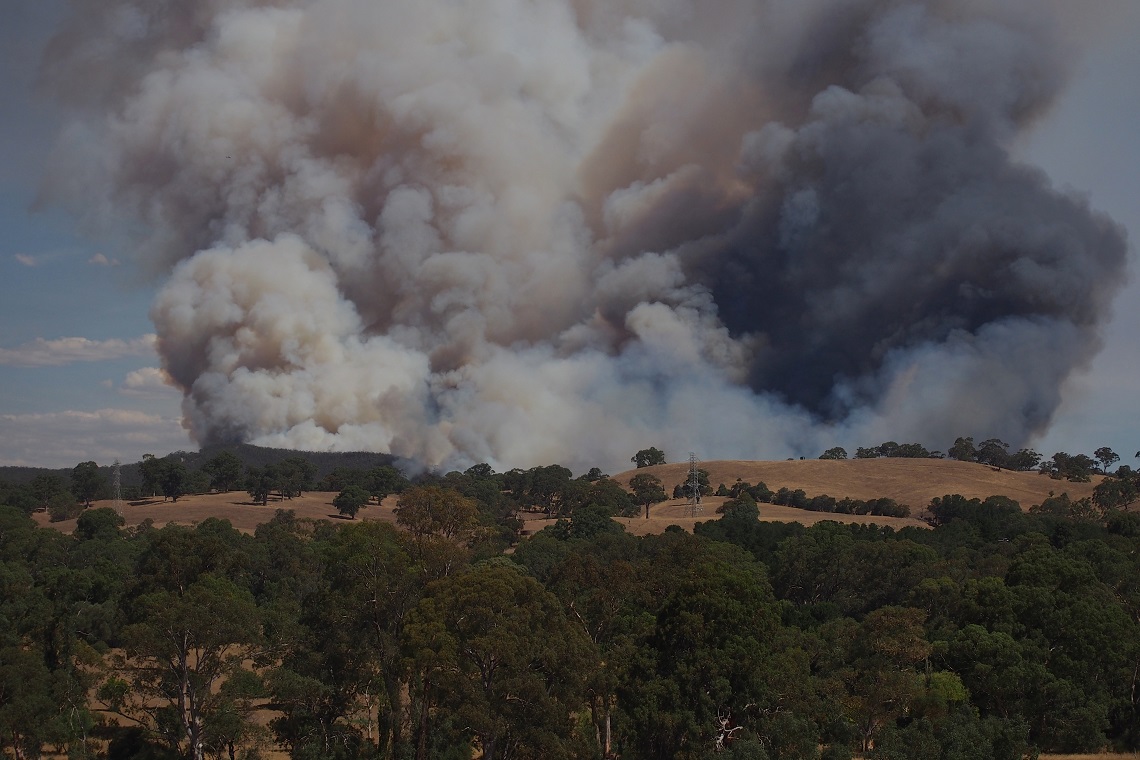A complex multi-agency research project has confirmed that blending or diluting unaffected wine with smoke-tainted wine can be an effective technique to produce wine after bushfires.
The confirmation comes from research by the Australian Wine Research Institute (AWRI), funded by the Department of Agriculture, Water and the Environment’s Rural R&D for Profit program and Wine Australia, in a recently finalised factsheet on dilution to treat smoke tainted wine. Project partners included the AWRI, Agriculture Victoria, LaTrobe University, Wine Victoria and CRC Polymers.
Dr Julie Culbert, a research scientist who was part of the AWRI team working on the project, said: “The message is clear: not all hope is lost when it comes to smoke affected fruit.”
“Blending trials will help [winemakers] determine if a final wine blend with suitable sensory properties can be achieved.”
One of the project’s main objectives was to evaluate remedial management options for dealing with smoke affected grapes and wine. Dilution with unaffected wine was one option for doing this that was evaluated in the project.
In the study, researchers took a smoke-affected 2019 Pinot Noir rosé and blended it with an unaffected Pinot Noir wine of a similar style from the same vintage. Members of the AWRI’s technical quality panel assessed a dilution series of six samples to review any smoke aroma and flavour alongside the overall fruit aroma and flavour.
Samples ranged from undiluted smoke affected wine, then dilutions of 50, 25, 12.5 and 6.25 per cent dilutions of smoke-affected wine into unaffected wine, and then finally, a fully unaffected wine.
“As expected, the 100 per cent smoke-affected wine was scored significantly higher in “smoke” aroma and flavour than the unaffected wine and was the lowest scoring wine for “overall fruit” aroma and flavour,” Dr Culbert said.
“Dilutions of the affected wine with 75 per cent or more unaffected wine resulted in ‘smoke’ aroma and flavour scores not significantly different from the unaffected wine.”
Through these tests, the study has confirmed that diluting smoke affected wine with enough unaffected wine will allow the smoke properties to be effectively ‘blended away.’ However, Dr Culbert has stressed that although this is positive news, the exact same measures won’t produce the same outcome to all wine producers.
“This is where blending trials can play an important role in decision-making. We recommend conducting trials on small volumes of wine to determine a final wine blend with suitable sensory characteristics,” said Dr Culbert.
“And, as with all remediation treatments, producers should consider the costs and benefits of a dilution approach and their own individual circumstances and wine characteristics.”
After the recent devastating bushfire season, which has been warned by some to be ‘the new normal’, many producers across the country were impacted by differing levels of smoke taint. Although this increased knowledge and advice may come a little too late for them, expanding the smoke taint toolkit will prove invaluable for vintages to come, especially if the dire fire predictions stand true.
Other main objectives of the smoke taint research project that would be helpful in this regard are: to develop an early warning remote sensing network for monitoring real-time levels of smoke and to evaluate a range of possible preventative measures to reduce uptake of smoke compounds in the vine and grapes.
Smoke taint has long been a topic of concern in the wine industry, even more so after recent bushfires so severely affected producers in a range of wine regions. This research is joined by initiatives from inside the industry itself, as producers grapple with what to do with smoke tainted fruit.
While some grapes helped feed livestock in the midst of the ongoing drought, Archie Rose teamed up with Hunter Valley winemakers Tulloch and First Creek to try distilling smoke tainted grapes into brandy.


